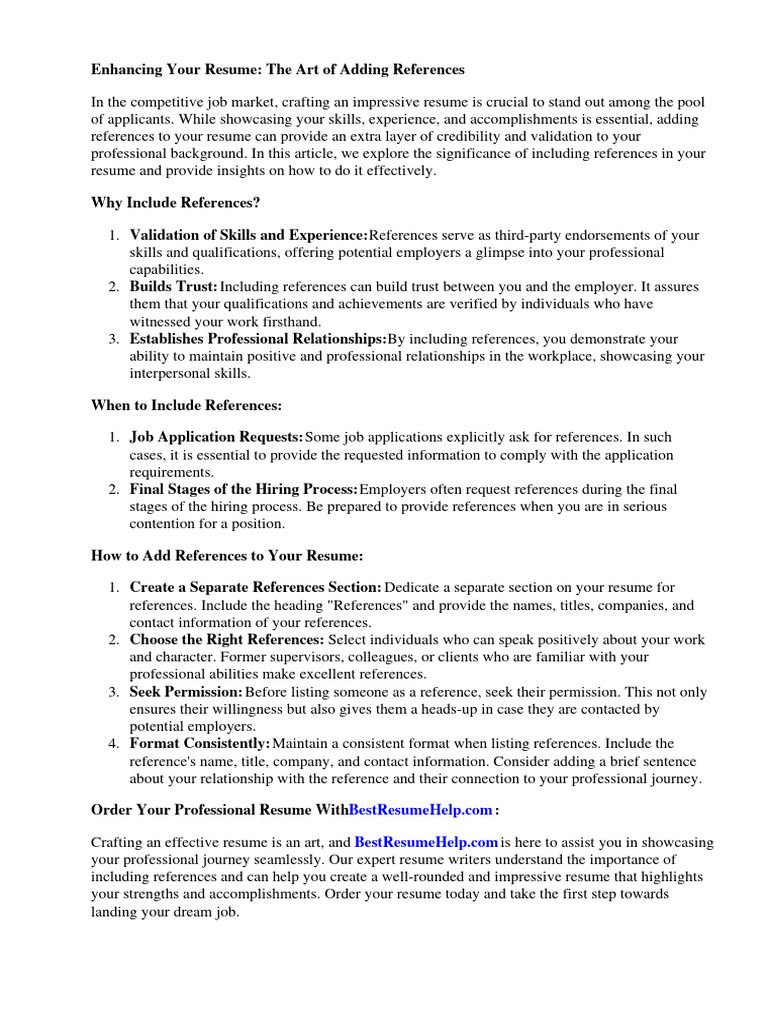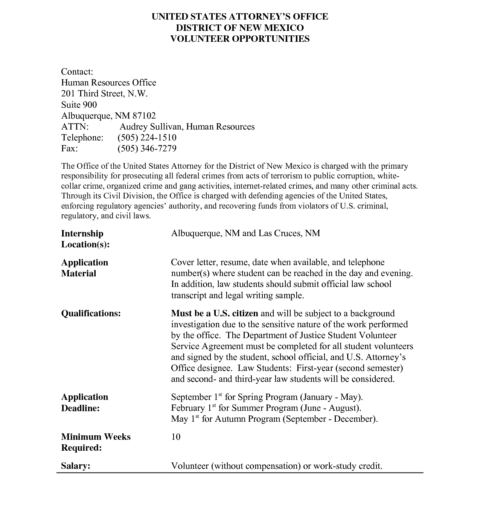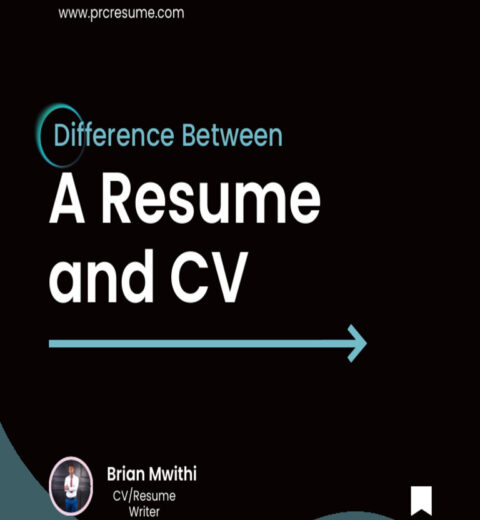In the competitive arena of job applications, distinguishing oneself is paramount. An impeccable résumé enhances your likelihood of securing an interview by presenting your qualifications and experiences succinctly. One of the frequently debated aspects of résumé composition is the inclusion of references. While references can bolster your credentials, one must consider how to add them without overloading the document. Here’s a comprehensive guide on how to incorporate references effectively while maintaining clarity and conciseness.
Understanding the Importance of References
References serve as a vital endorsement of your professional capabilities. They provide potential employers with insights into your work ethic, skillset, and character. Nonetheless, including references directly on your résumé can clutter the document, distracting from your qualifications. Hence, there is a fine balance to strike between showcasing your value and avoiding unnecessary verbosity.
Determining When to Include References
Knowing when to include references depends largely on your industry and the specific position for which you are applying. Some fields, particularly those in academia or certain professional sectors, may expect references to be included at the initial application stage. In contrast, many corporate roles prefer candidates to provide references upon request. Therefore, it’s prudent to meticulously analyze the job description and company culture before making a decision.
Creating a Reference List
Rather than embedding references within your résumé, a more sophisticated approach is to maintain a separate reference list. This method allows you to preserve the clarity of your résumé while ensuring that references are readily available when required. Follow these steps to craft an effective reference list:
- Select Appropriate References: Choose individuals who can vouch for your professional capabilities. This may include former supervisors, colleagues, or mentors. Ensure that your references can provide personalized insights rather than generic praises.
- Request Permission: Before listing someone as a reference, seek their permission. This courtesy fosters professionalism and allows your references to prepare for potential inquiries.
- Format Correctly: Present your reference list on a separate document. Use a clean format similar to your résumé. Include the reference’s name, title, organization, phone number, and email address. A consistent format enhances readability.
Incorporating References in Your Résumé
If the position warrants it, and you decide to include references directly in your résumé, employ strategic positioning. Place references at the end of your résumé. This ensures they do not detract from the more critical sections that emphasize your skills and achievements. Utilize a concise phrase, such as “References available upon request,” to convey openness without overwhelming the layout.
Managing the Number of References
There’s a common misconception that an abundance of references equates to a stronger application. In reality, quality outweighs quantity. Select three to five well-chosen references. A succinct list avoids clutter and makes it easier for hiring managers to digest the information. Additionally, having fewer references allows you to focus on nurturing relationships with those you do list, ensuring they can provide more substantial endorsements.
Timing Your Reference Submission
Be strategic about when you disclose your references. Typically, references are requested after your interview or when you are a final candidate, hence delaying the inclusion on your résumé can be advantageous. If you’re provided an option, offer to send your reference list separately via email. This provides the hiring manager with quick access while keeping your résumé polished and focused.
Addressing Potential Concerns
Employers may have specific concerns regarding the reliability of references. To counteract this, ensure that your chosen references align with the position for which you are applying. For example, if you are vying for a managerial role, include references such as former supervisors or team leads who can speak to your leadership abilities. Moreover, adopting a proactive approach—such as informing your references about the type of position you are pursuing—can allow them to tailor their recommendations effectively.
Utilizing LinkedIn as a Tool
In the digital age, LinkedIn serves as an invaluable platform for professional networking and references. Rather than listing references on your résumé, consider incorporating links to your LinkedIn profile, where potential employers can view recommendations and endorsements from previous colleagues. This approach provides a contemporary touch while guiding recruiters to a more comprehensive perspective on your professional relationships.
Final Thoughts
Including references on your résumé need not be an arduous task. By opting for a separate reference list, strategically managing the number and placement of references, and addressing potential concerns effectively, you can enhance your application without overwhelming it. Remember, the aim is to provide potential employers with sufficient information to validate your qualifications while ensuring your résumé remains succinct and impactful. As you navigate the application process, let your references serve as robust testimonials to your professional journey, and approach the integration of these endorsements with careful consideration.




